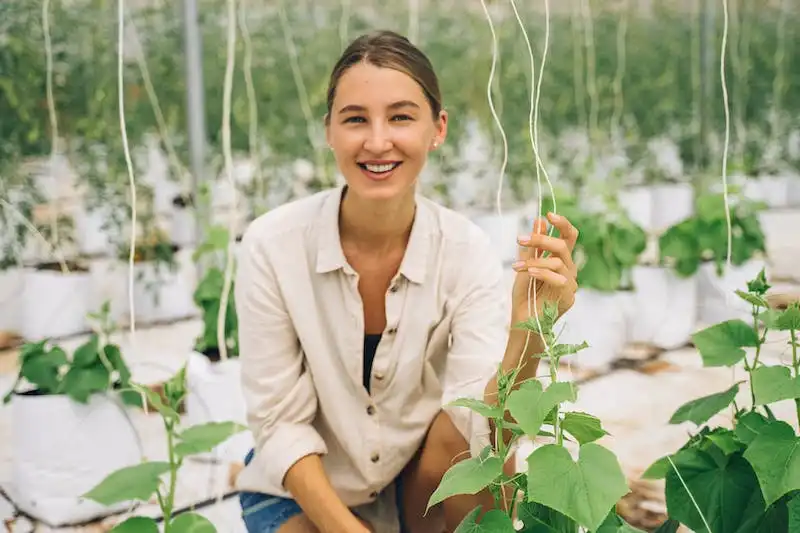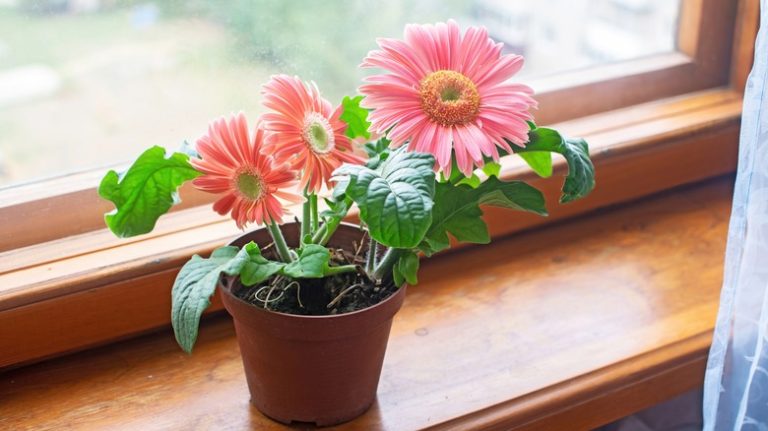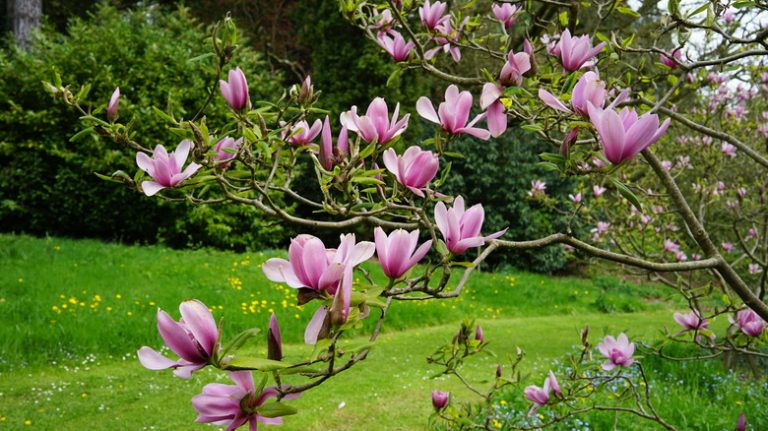If you want a plant that adds plenty of fragrance and beauty to your garden, look no further than the Arabian Jasmine plant. This plant, also known as Sampaguita, is native to the Philippines but is popularly grown in California due to its ability to thrive in a range of conditions.
The Arabian Jasmine plant features small, star-shaped white flowers that emit a sweet, floral fragrance. The lush foliage of this plant provides an attractive backdrop for the flowers, making it a favorite among garden enthusiasts.
When it comes to caring for Arabian Jasmine plants, there are a few things to keep in mind. First, this plant prefers well-draining soil to avoid root problems such as fungus or rot. It also dislikes extremely cold temperatures, so if you live in a colder climate, it’s best to grow the Arabian Jasmine plant indoors or in a greenhouse.
The Arabian Jasmine plant can be propagated through stem cuttings or by layering. When planting, make sure to give the plant enough space to spread, as it tends to grow in a mounded shape. Additionally, this plant requires light to thrive, so make sure it is placed in a spot that receives plenty of sunlight.
Frequent watering is necessary for the Arabian Jasmine plant, but be careful not to overwater as this can lead to root rot. It’s best to water the plant when the top inch of soil feels dry to the touch. If you notice the foliage starting to shrivel or develop dark spots, it may be a sign of overwatering or a fungal infection. In such cases, a fungicide can be used to treat the problem.
Overall, the Arabian Jasmine plant is a beautiful addition to any garden, with its fragrant flowers and lush foliage. It requires some care and attention, but with the right conditions and proper care, the Arabian Jasmine plant will thrive and bring joy to any gardener who chooses to grow it. So why not add an Arabian Jasmine plant to your garden today?
Gardenia Cape Jasmine
Gardenia Cape Jasmine, also known as Gardenia jasminoides, is a beautiful flowering plant that is highly valued for its fragrant flowers and lush foliage. It is a member of the Rubiaceae family and is native to the tropical and subtropical regions of Africa, Asia, and the Pacific Islands.
This specific species of Gardenia is often referred to as Cape Jasmine due to its origins in South Africa. The plant is grown for its stunning white flowers, which typically bloom from spring to fall. These flowers have a sweet, intoxicating fragrance that is often compared to the scent of jasmine or sampaguita.
Gardenia Cape Jasmine is a popular choice for gardeners who want to add a touch of elegance and fragrance to their outdoor space. It can be grown in garden beds or containers, and it thrives in a wide range of climatic conditions. However, there are some specific considerations you should keep in mind when caring for this plant.
Soil and Moisture
Gardenia Cape Jasmine prefers acidic, well-draining soil. It should be watered regularly, but be careful not to over-water as this can lead to root rot. The soil should be kept moist but not soggy. If the leaves start to turn yellow and the stems shrivel, it may be a sign of over-watering or poor drainage.
Light and Temperature
This plant loves bright, indirect sunlight. It can be grown indoors in a sunny spot near a window, or outdoors in a partially shaded area. In regions with hot summers, some afternoon shade is recommended to protect the plant from the intense heat. Gardenia Cape Jasmine is not frost-tolerant, so it’s important to bring it indoors or provide protection during winter months in colder climates. A temperature range of 60-75°F (15-24°C) is ideal for this plant.
Fertilizer and Maintenance
Gardenia Cape Jasmine benefits from regular feeding with a balanced, slow-release fertilizer formulated for acid-loving plants. Fertilize the plant in early spring and again in mid-summer. Avoid excessive use of nitrogen-rich fertilizers, as this can result in lush foliage at the expense of flower production. Remove spent flowers through deadheading to promote continuous blooming.
Pests and Diseases
Gardenia Cape Jasmine may attract common garden pests such as aphids, scales, and mealybugs. It can also be susceptible to fungal diseases such as leaf spots. Regularly inspect the plant for signs of pests or disease, and take appropriate measures for treatment if necessary. Avoid over-watering and allow proper air circulation to minimize the risk of fungal infections.
In conclusion, Gardenia Cape Jasmine is a beautiful and fragrant plant that can add a touch of luxury to any garden or indoor space. With proper care and attention to its specific growing requirements, you can enjoy its stunning flowers and intoxicating fragrance throughout the year.
| Botanical Name | Gardenia jasminoides |
|---|---|
| Common Names | Gardenia, Cape Jasmine |
| Blooming Season | Spring to Fall |
| Light Requirements | Bright, indirect sunlight |
| Soil Type | Acidic, well-draining soil |
| Watering Requirements | Regular watering to keep soil moist but not soggy |
| Temperature Requirements | 60-75°F (15-24°C) |
| Fertilizer | Slow-release, balanced fertilizer for acid-loving plants |
| Pests and Diseases | Aphids, scales, mealybugs, leaf spots |
Arabian Jasmine Plant: Fragrant Flowers & Lush Foliage
When it comes to adding beauty and elegance to your garden, there’s nothing quite like the Arabian Jasmine plant (Jasminum sambac). Known for its specific and fragrant flowers, as well as its lush foliage, this plant is a must-have for any garden enthusiast.
Arabian Jasmine plants are known for their beautiful white flowers, which bloom throughout the year. The flowers are known for their intoxicating fragrance and are often used in the production of perfumes. The lush foliage of the plant adds to its overall appeal, with dark green leaves that are waxy and shiny.
If you want to manage the Arabian Jasmine plant in your garden, there are a few things you should know. First and foremost, this plant prefers well-draining soil. It is best planted in an area where it will receive full sun, although it can tolerate partial shade as well.
When it comes to pruning, Arabian Jasmine plants do not require frequent pruning. However, if you notice any diseased or disfiguring branches, it is best to remove them immediately. Pruning should be done at least once a year, preferably prior to the plant’s major growth period.
One of the most common questions asked about Arabian Jasmine plants is how to manage yellowing and wilting of flowers. In most cases, this is due to overwatering. Arabi4n Jasmine plants do not like soggy soil and are susceptible to root rot with excessive water. To prevent this, make sure to water them only when the top inch of soil is dry.
Arabian Jasmine plants are also prone to pests and diseases. Two common pests to watch out for are aphids and whiteflies. These can be controlled by using natural insecticides or by introducing beneficial insects to your garden. When it comes to diseases, one to watch out for is Alternaria leaf spot, which can cause dark brown or black spots on the foliage. To prevent this disease, make sure to provide adequate air circulation around the plant and avoid overcrowding.
For those living in colder climates, such as California, it’s important to note that Arabian Jasmine plants are not frost-tolerant. The plant begins to suffer damage when the temperature drops below 40°F (4°C). In winter, it is best to protect the plant by moving it to a warmer area or covering it with a frost heater if you want to keep it alive.
Overall, Arabian Jasmine plants are a beautiful addition to any garden. With their fragrant flowers and lush foliage, they provide an elegant touch to any landscape. With proper care and attention, these plants can thrive and bring joy to garden enthusiasts.
Quick Care Guide
Here’s a quick care guide for Arabian Jasmine plants:
- Grows in a mounded shape, reaching a height of about 3 feet.
- Plant in well-draining soil that is rich in organic matter.
- Arabian Jasmine prefers full sun to partial shade.
- Water the plant frequently to keep the soil moist, but not waterlogged.
- Fertilize the plant regularly with a balanced fertilizer.
- Protect the plant from frost, as it can be life-threatening.
- Prune the plant regularly to keep it compact and promote lush foliage.
- Keep an eye out for pests such as aphids and scale insects. Use appropriate treatment if needed.
- Prevent diseases by providing proper care and avoiding overwatering.
- Repot the plant when it outgrows its container.
- If the plant doesn’t bloom, it may need more sunlight or fertilizer.
- Watch out for yellow spots on the foliage, as they may indicate a fungal infection.
- When repotting, use well-draining soil and ensure it’s not too muddy.
- If you want to propagate Arabian Jasmine, take cuttings from healthy, disease-free plants.
- Keep pets and children away from the plant, as some parts can be toxic if ingested.
- Enjoy the fragrant flowers and lush foliage throughout the plant’s life.
If you have any specific questions or need further assistance, don’t hesitate to consult a gardening guide or ask a local garden center for advice.
All About Arabian Jasmine
Arabian Jasmine, also known as Jasminum sambac, is a fragrant flowering plant that belongs to the olive family. It is native to the Arabian Peninsula, but is also commonly found in Southeast Asia and parts of Africa.
Arabian Jasmine is known for its beautiful white flowers, which have a strong, sweet fragrance. The flowers usually start off as small buds, and then open up to reveal their delicate petals. They can be found in clusters, and each flower can be up to 1 inch in diameter.
The foliage of the Arabian Jasmine is lush and green, with long vines that can grow up to 10 feet in length. It is a fast-growing plant, and can quickly cover a trellis or a fence. Its dark green leaves contrast beautifully with the white flowers.
Arabian Jasmine is a popular plant for gardens and landscapes, particularly in warm climates. It is most commonly grown in the southern parts of the United States, such as California and the Cape. It can tolerate a wide range of soil types, as long as it is well-drained. It prefers a sandy or loamy soil, but can also grow in clay soil if it is not too compacted.
Arabian Jasmine is relatively easy to grow and manage, but there are a few things to keep in mind. First, it is a tropical plant and does not tolerate frost. It should be planted in an area where the temperature does not drop below 40 degrees Fahrenheit. In cooler climates, it can be grown in containers and brought indoors during the winter months.
Arabian Jasmine requires plenty of water, especially during the growing season. It should be watered regularly, but be careful not to overwater it as this can lead to root rot. It is also important to provide the plant with humidity, as it thrives in moist environments. Mist the leaves with water or use a humidifier to increase humidity levels.
Arabian Jasmine is susceptible to a few diseases, including alternaria leaf spot and sooty mold. These can cause yellowing of the leaves and dark, sooty growth on the stems and foliage. To manage these diseases, it is important to ensure good air circulation and avoid overwatering. Fungicide sprays can also be used to control the spread of disease.
When it comes to fertilizer, Arabian Jasmine is not too demanding. It can benefit from a liquid fertilizer applied every few weeks during the growing season. A balanced fertilizer with equal parts nitrogen, phosphorus, and potassium is recommended. Fertilizer should be applied to the soil around the plant, rather than directly on the foliage.
In terms of pests, Arabian Jasmine is generally not prone to major insect infestations. However, it can attract aphids, whiteflies, and spider mites. These pests can be managed with insecticidal soap or neem oil.
Arabian Jasmine is a versatile plant that can be used in many different ways. It can be grown as a standalone plant in a garden or planted alongside other flowers to create a beautiful display. It can also be grown in containers and used to add fragrance to patios and balconies.
Lastly, Arabian Jasmine is toxic to pets if ingested, so be sure to keep it out of reach of curious animals.
In conclusion, Arabian Jasmine is a fragrant and beautiful flowering plant that adds a touch of elegance to any garden or landscape. With proper care and attention, it can thrive and reward you with its stunning flowers and delightful fragrance.




